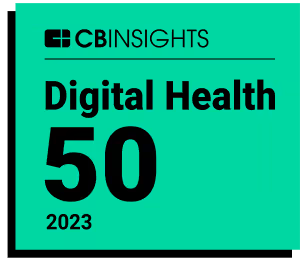As Paul Starr famously wrote about in The Social Transformation of American Medicine, the healer’s relationship with the patient was historically perceived not unlike a religious leader’s relationship with a parishioner: an opportunity to get closer to a higher spiritual plane.
Today, with patients routinely “consulting” with online resources, self-diagnosing, or requesting medication they saw on a television ad, the physician-patient relationship has materially changed. That said, the objectives have not: patients wish for their doctors to help them be physically and mentally well.
Well-Being is Being Redefined in Real Time
It’s widely established that clinicians who develop strong relationships with their patients and give a sense that they truly know their patients are more likely to have patients who trust and adhere to treatment and experience better quality of life over time.
However, achieving this relationship has become increasingly utopic.
As patients, when we see many doctors across specialties, care delivery settings, and modalities, it becomes very difficult to get a single answer that takes our full clinical context and history into account. Thinking about patients with multiple chronic conditions, accessibility issues, cultural, financial, or language barriers, developing a positive, trusting relationship becomes even more challenging. Our quarterback is our primary care physician, but increasingly, they’re burdened under time and workflow pressure.
The truth is, our doctors want to spend more time with us. They want to discuss details, but with data streaming in from different sources in real or near-real time, they’re spending more time data mining on the computer than asking questions and discussing treatment options.
Worse still, without the full clinical context, there’s greater risk of missing important information. Add on the operational challenges our healthcare system faces with staff shortages and increasing administrative requirements, the situation feels untenable.
AI isn’t Just the Answer, it is the ONLY Answer
There is a clear need to correct course and bring elements of those early healer-patient relationships back to the exam room. With artificial intelligence, we can give our doctors back that deep understanding they crave.
Our primary care physicians have limited time to prepare for patient visits. They have dozens of pages of information to wade through, it’s disorganized and non-chronological, and recent data from different sources is often fragmented. These disconnected dots mean clinical misses are inevitable. Unlike physicians, AI cannot be overburdened; it can process a high volume of data across sources. Even if physicians had time to go through all the scanned documents in the EHR, most documents do not have meaningful names, and procedure dates may be listed incorrectly. With AI models trained to classify and handle these inconsistencies, physicians are no longer reconciling or data mining.
The results are palpable, as formerly stressed physicians, struggling to process acres of patient records, can engage in holistic, proactive care that takes into account a wider clinical and non-clinical, social context. This makes care more effective and realistic for patients to adhere to.
What many of us don’t realize as patients is the amount of administrative work that physicians are responsible for. Many of them are working after hours preparing for visits, documenting earlier visits, and complying with contracts they have with insurance companies.
Generative AI capabilities can revolutionize how data informs the physician-patient interaction. Administrative work can be done faster and burdensome documentation can be offloaded, enabling doctors to spend more time with their patients. Taking this a step further, physicians equipped with a conversational AI assistant can instantly access the information they need, such as legible chart summaries, treatment protocols, and more. Thus, physicians will practice medicine the way they were trained to–by asking the right questions to inform their decisions in the moment of care.
Responsible AI for Patient Safety, Privacy, and Bias Reduction
I understand the risks that AI can surface inherent biases in data through its algorithmic design. But these potential limitations can be purposefully overcome. In fact, AI can view patients more objectively than even the most open-minded physicians, since every patient becomes an n of one.
When we bring AI to the point of care, our doctors need to work together with the AI, see explanations and source information to ensure they are making the right decisions for their patients.
My vision is that primary care, led by a combination of AI and sensitive, caring physicians – working hand-in-code – will create a new era of patient well-being that creates deeper relationships, informed patients, superior outcomes, and unprecedented equity.







.png)















